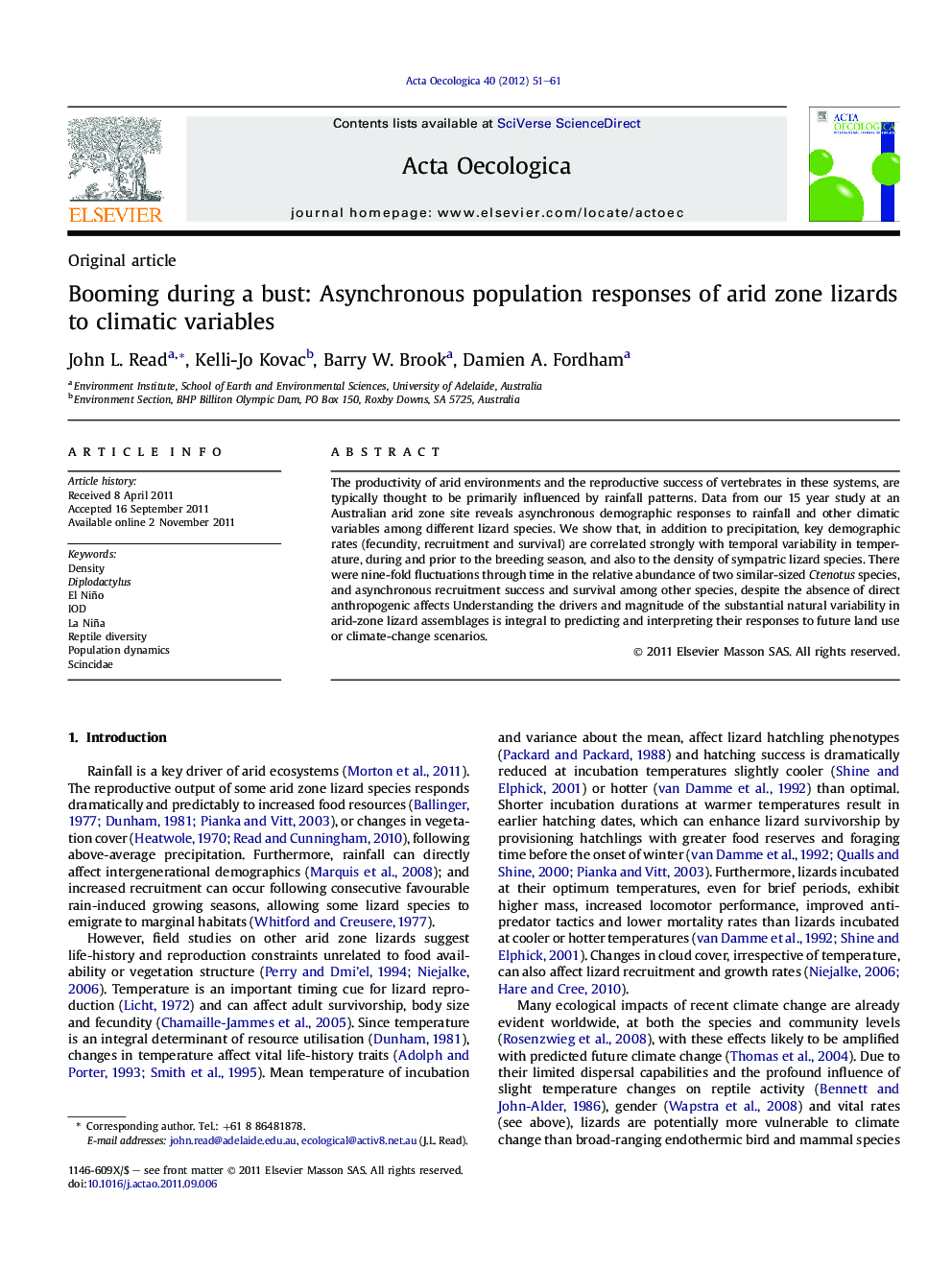| Article ID | Journal | Published Year | Pages | File Type |
|---|---|---|---|---|
| 4381194 | Acta Oecologica | 2012 | 11 Pages |
The productivity of arid environments and the reproductive success of vertebrates in these systems, are typically thought to be primarily influenced by rainfall patterns. Data from our 15 year study at an Australian arid zone site reveals asynchronous demographic responses to rainfall and other climatic variables among different lizard species. We show that, in addition to precipitation, key demographic rates (fecundity, recruitment and survival) are correlated strongly with temporal variability in temperature, during and prior to the breeding season, and also to the density of sympatric lizard species. There were nine-fold fluctuations through time in the relative abundance of two similar-sized Ctenotus species, and asynchronous recruitment success and survival among other species, despite the absence of direct anthropogenic affects Understanding the drivers and magnitude of the substantial natural variability in arid-zone lizard assemblages is integral to predicting and interpreting their responses to future land use or climate-change scenarios.
► Desert lizard demography changes were investigated in a rigorous 15 year study. ► Climate drove a 9 fold reversal in relative abundance of 2 lizard species. ► Asynchronous recruitment and survival was driven by temperature variability. ► Climate change implications for monitoring and conservation are discussed.
